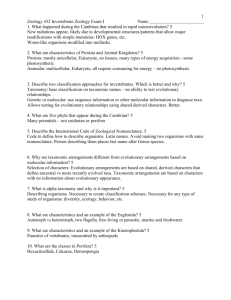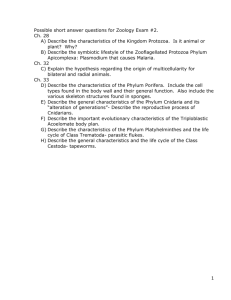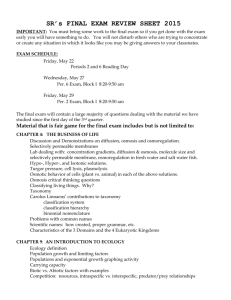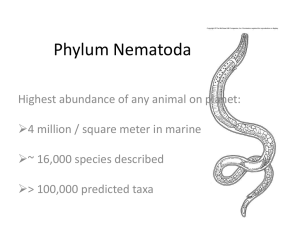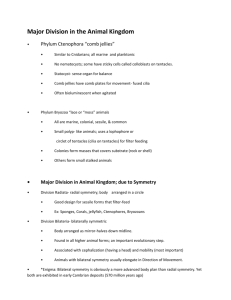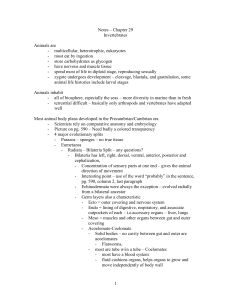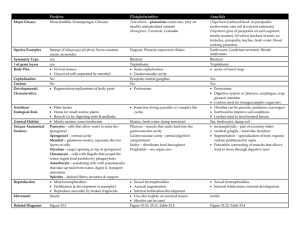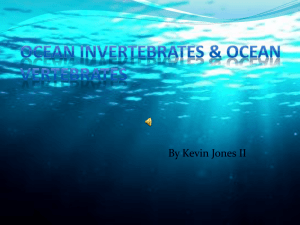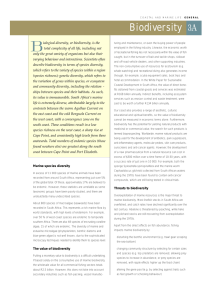Document
advertisement
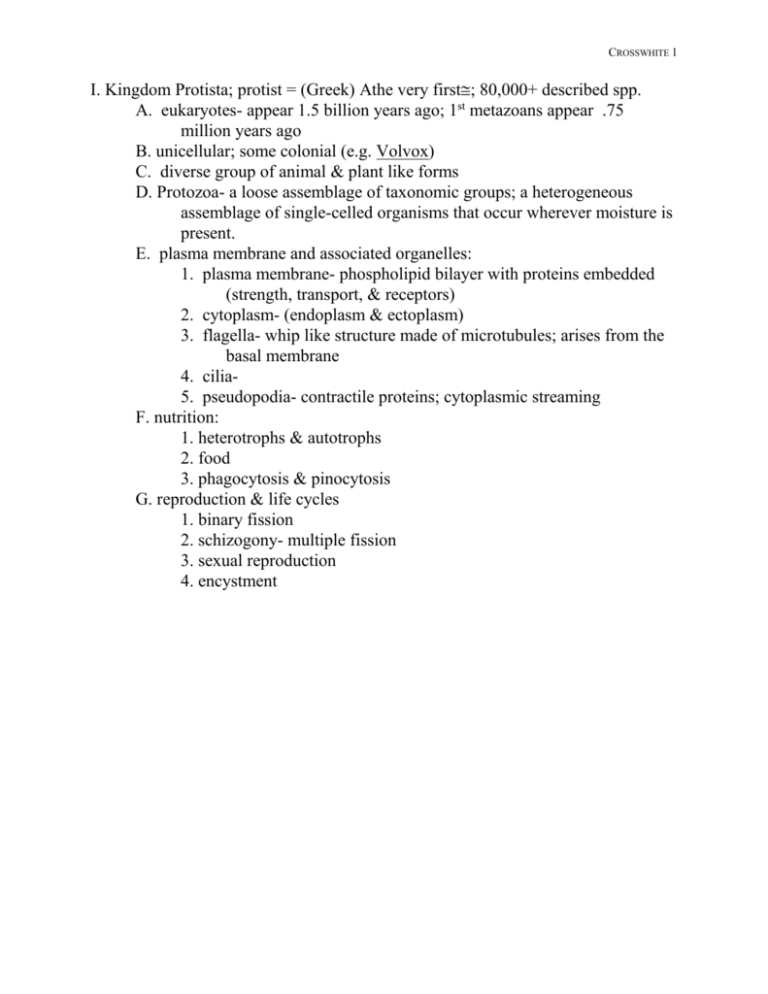
CROSSWHITE 1 I. Kingdom Protista; protist = (Greek) the very first; 80,000+ described spp. A. eukaryotes- appear 1.5 billion years ago; 1st metazoans appear .75 million years ago B. unicellular; some colonial (e.g. Volvox) C. diverse group of animal & plant like forms D. Protozoa- a loose assemblage of taxonomic groups; a heterogeneous assemblage of single-celled organisms that occur wherever moisture is present. E. plasma membrane and associated organelles: 1. plasma membrane- phospholipid bilayer with proteins embedded (strength, transport, & receptors) 2. cytoplasm- (endoplasm & ectoplasm) 3. flagella- whip like structure made of microtubules; arises from the basal membrane 4. cilia5. pseudopodia- contractile proteins; cytoplasmic streaming F. nutrition: 1. heterotrophs & autotrophs 2. food 3. phagocytosis & pinocytosis G. reproduction & life cycles 1. binary fission 2. schizogony- multiple fission 3. sexual reproduction 4. encystment CROSSWHITE 2 II. Flagellated Protozoa: Mastigophora; 6900 spp.; free swimming, sessile, & colonial forms A. phylum Dinophyta (dinoflagellates); ~2000 spp.; fresh water & marine 1. chlorophyll a & xanthophyll 2. theca- thickened pellicle 3. bioluminescence 4. symbionts w/ corals 5. red tides B. phylum Euglenophyta 1. marine & freshwater forms 2. Euglena; Peranema C. phylum Chlorophyta 1. marine & freshwater forms 2. Clamydomonas; Volvox D. phylum Choanoflagellida 1. marine & freshwater forms 2. collar of microvilli 3. solitary & colonial forms 4. closest relative of metazoans E. phylum Kinetoplastida 1. important parasites 2. Trypanosoma a. Chagass disease- transmitted by hemipteran bugs b. African Trypanosomiasis: sleeping sickness 1. western and central Africa 2. chronic infection 3. effects horses, cattle, sheep, humans & antelope, & swine F. multiflagellated protozoa: 1. Giardia2. Trichomonas vaginalis- widespread venereal disease infecting the human urogenital tract 3. Trichonympha & Mixotricha a. thousands of flagella b. inhabit the gut of termites & wood eating cockroaches CROSSWHITE 3 III. Ameboid Protozoa: Sarcodina A. marine, freshwater, & terrestrial forms; entirely heterotrophic & some endoparasites B. pseudopodia- prey capture & locomotion C. phylum Rrhizopodia: amoebas 1. naked & shelled forms w/ test 2. lobopodia -vs- filopodia 3. foraminiferans- forams w/ reticulopodia a. mostly marine b. many w/ multichambered shells c. mostly benthic D. phylum Actinopoda: heliozoans (fresh water) & radiolarians (marine) 1. axiopodia- needle-like pseudopodia 2. adhesive cytoplasm 3. naked or w/ spiny skeleton of silica 4. shells of dead are a primary constituent of many ocean sediments IV. Apicomplexa ~ 4000 spp. A. endoparasites of vertebrates & inverts B. lack cilia, flagella, or pseudopodia C. complicated life cycle w/ sexual & asexual phases; Fig. 2-32 D. Plasmodium- transmitted by Anopheles mosquito; malaria V. Ciliophora ~ 7200 spp.; largest & most homogeneous protozoan phylum A. fresh water & marine B. free living, ecto-, endoparasites; sessile & colonial forms C. two types of nuclei 1. macronucleus- metabolism 2. micronucleus- reproductive D. pellicle & trichocysts E. cytostome & specilization of buccal ciliature
